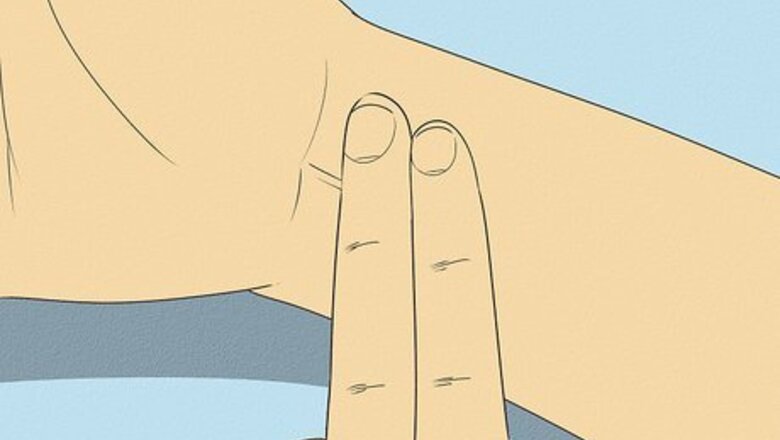
views
How do I check my heart rate?
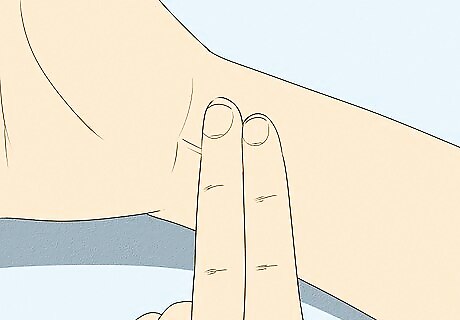
Place two fingers on your wrist or neck. Turn one hand palm-up. Place the tips of your second and middle fingers on the other hand against your wrist, between the bone and tendon just underneath your thumb. If you can't feel a clear pulse there, place the fingers against one side of your neck instead, in the groove to the side of your windpipe. Don't use your thumb to check your pulse. An artery runs through your thumb, so you might double-count your pulse this way. You usually only need to press softly. If you can't find the pulse, press a little harder or move your fingers around.

Count the number of heartbeats you feel in 30 seconds. You can set a 30-second timer, or watch the second hand of an analog clock. It's normal to occasionally skip a beat, but if your pulse has an irregular rhythm for the whole 30 seconds, especially if it is very fast and/or you are over 65, you might have a condition called atrial fibrillation. This is rarely life-threatening, but it's a good idea to make an appointment with your doctor.
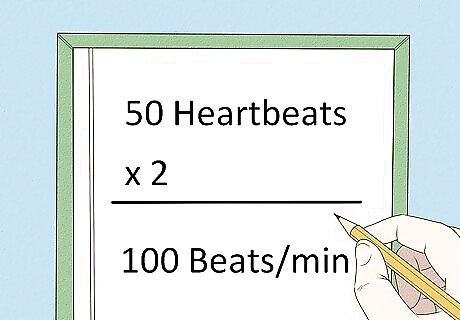
Multiply by two to get your heart rate. For example, if you counted 50 heartbeats in 30 seconds, multiply 50 by 2 to get 100. This is the number of beats per minute, the standard way to measure your heart rate. For the most accurate reading, repeat this a couple more times. Take the average of the three results ((first result + second result + third result) ÷ 3).
Can I check my pulse with my phone?

Phone apps can only give you inaccurate heart rate readings. Many phone apps can be off by more than 20 beats per minute. You can use them to quickly confirm that your low- to moderate-intensity exercise has increased your heart rate, but don't rely on them when safety is important (such as during extreme exercise or if you have a heart condition). The "contact" apps that have you place your finger against the camera are more accurate than the "non-contact" apps that only ask you to show your face to the camera.
Do Fitbits or other fitness watches measure heart rate accurately?
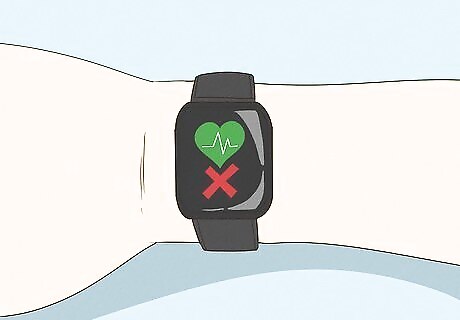
Wrist sensors are not accurate enough for intense exercise. Fitness trackers that fit onto your wrist (and don't connect to any other sensors on your body) are pretty good at measuring your resting heart rate. But they tend to be less accurate above 100 beats per minute, and very inaccurate over 130 bpm. If you use one of these trackers and feel like you've pushed yourself past your limit, stop and check your pulse by hand instead of trusting the display. The sensors on these trackers have more trouble getting an accurate reading through darker skin, including tattoos and birthmarks.
Is it worth getting a heart rate monitor?
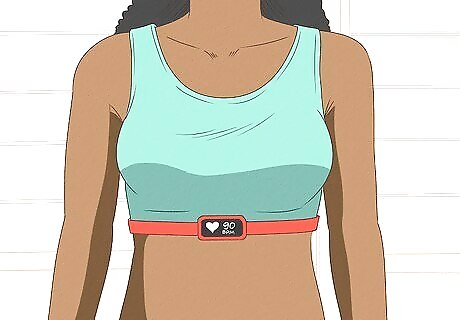
A monitor is only useful if you choose one that suits your needs. Before you spend money on a heart rate monitor, see if you can find a review from a knowledgeable expert. In general, certain technologies are better than others: Monitors with a strap that wraps around your chest are the most accurate. This is the only type of fitness tracker recommended for cardiac patients. (Note that some older models have trouble working near electrical devices.) Wristwatch sensors are less reliable, especially on dark skin and during vigorous exercise. They're an okay option for people looking for general feedback and exercise motivation, but not for precise data. Handgrip monitors found on exercise equipment are very unreliable.
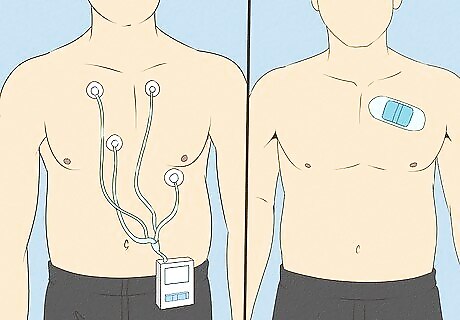
Choose a medical monitor to diagnose irregular heart events. If you have occasional heartbeat irregularities or related symptoms, ask a doctor about an electrocardiogram (ECG) monitor. These are temporary, wearable devices to help diagnose medical problems. A Holter monitor is a small ECG device you wear for a day or two. A doctor might recommend this if your heart-related symptoms happen on most days, but too unpredictably to be detected at the doctor's office. An event monitor is a similar device that can be worn for weeks at a time. When you feel an abnormal heartbeat, you press a button to record your ECG.
How can I monitor my heart rate with medical devices?

Blood pressure readings also check your pulse. Any time you have your blood pressure checked, your pulse is checked as well. Ask for a reading at a doctor's office or fire station, or purchase a blood pressure cuff from the pharmacy to take the reading yourself. If a doctor asks you to monitor your heart rate and blood pressure at home, ask the doctor to test your device against the office equipment first. Some models for home use can be inaccurate.
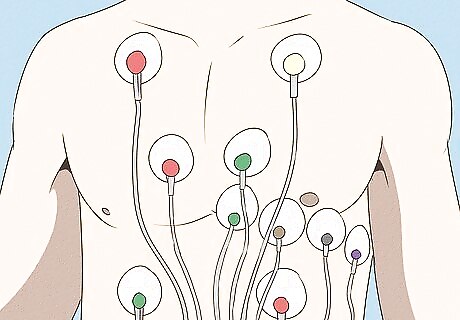
Look into electrocardiography to identify heart problems. If you have a high or low heart rate and associated symptoms, an ECG recording can help diagnose what's going on. This is a simple, safe test that only takes a few minutes at the doctor's office. A nurse places 12 electrodes against your skin and measures your heart activity for a few minutes. If the ECG detects nothing wrong but you are concerned about your symptoms, ask a doctor about a wearable ECG device. Your doctor may ask you to do a stress test, taking an ECG while you exercise with increasing intensity. The results can give you a personalized picture of your heart health and what exercise levels are safe and healthy for you.
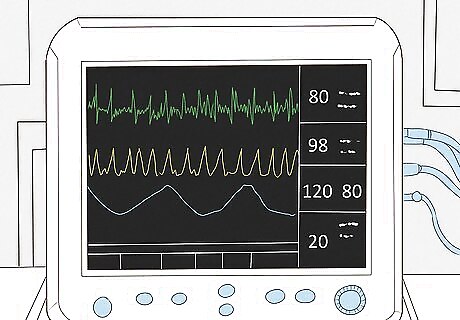
Hospitals use cardiac monitors to detect danger signs in patients. The electronic screen next to a hospitalized patient is an efficient way to monitor the patient for problems that require medical attention. This may include a heart rate monitor (usually a green number at the top right, labeled HR or PR) and a simple ECG readout showing a line that moves with the heartbeat.)
How do I measure my resting heart rate?
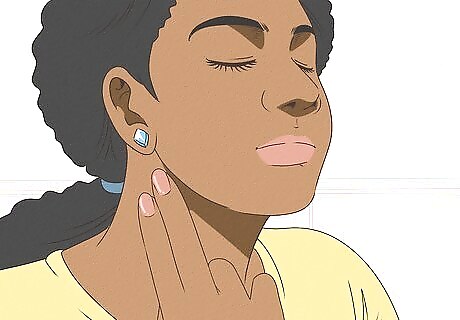
Take your pulse while you are relaxed. Your resting heart rate is simply the rate your heart beats at while you are not exercising or stressed. Just count the number of heartbeats in 30 seconds, then multiply by 2 to get your heart rate. You can do this anytime you meet these criteria: You haven't exercised, had caffeine, or been stressed in the last hour or two. Sitting or standing is fine, but change positions first if you have been in the same position for a long time. Wait 20 seconds after standing up. You are not experiencing any intense emotions.
What is a good heart rate for my age?

Calculate 70% of your max heart rate as a goal for moderate exercise. Use this quick formula to help you determine the most beneficial heart rate during moderate exercise, such as walking at top speed or low-effort biking: Your maximum healthy heart rate in beats per minute is about 220 - your age. For example, if you are 55, it is about 220 - 55 = 165. Multiply this by 0.7 to get a rough target: 165 x 0.7 = ~116 beats per minute. (Or use 0.64 and 0.76 to get the lower and upper bounds.)
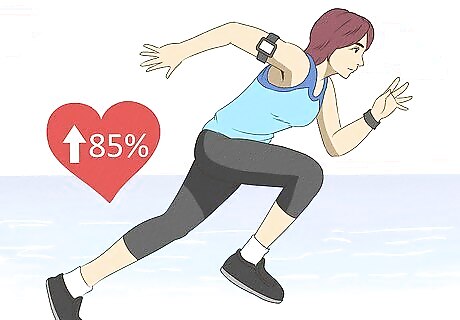
For vigorous exercise, aim for about 85% of max heart rate. Your maximum heart rate is about 220 - your age, so calculate this then multiply the answer by 0.85 to get a target goal for vigorous exercise. This is any exercise that is high-effort enough to make it hard to speak without pausing for breath, such as jogging or running, most sports, or high-effort bicycling. For example, if you are 55, your max heart rate is 220 - 55 = ~165, and your vigorous exercise target is 165 x 0.85 = ~140 beats per minute. Calculate the lower bound of your target heart rate by using 0.77 instead of 0.85. Calculate the upper bound using 0.93.
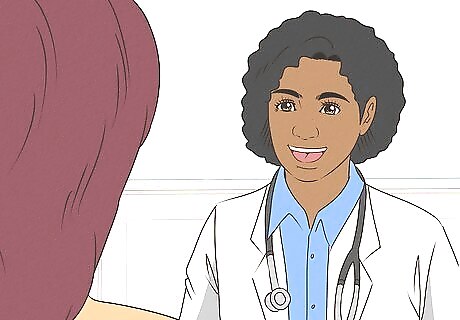
Consult a doctor or trainer for more personal advice. The math above is a good enough estimate for most of us. But in some situations, it's a good idea to get a professional consultation: You have a heart condition or take medication that affects your heart rate. You want to start a vigorous exercise routine and are a male over 45, a female over 55, have diabetes, or have a risk factor for heart disease. You are an elite athlete looking for extra-accurate measurements. If you can't visit a trainer right now, the formulas "(maximum heart rate - resting heart rate) x 0.7" and "(max heart rate - resting heart rate) x 0.85" will give you a target range for vigorous exercise that takes into account a low resting heart rate.
What is a dangerous heart rate?
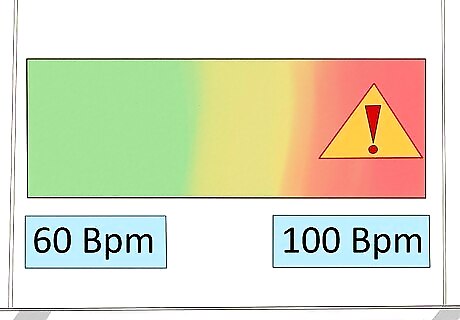
See a doctor for resting heart rates below 60 or above 100. There is a wide variation in normal heart rates, but they usually fall between 60 and 100 beats per minute. Consult a doctor if you are outside this range. Athletes often have a heart rate below 60 at rest because their heart is in good shape, so each beat pumps more blood through their body. If you have excellent fitness and do not have any other symptoms such as dizziness or shortness of breath, there is no need to be concerned about a low heart rate.
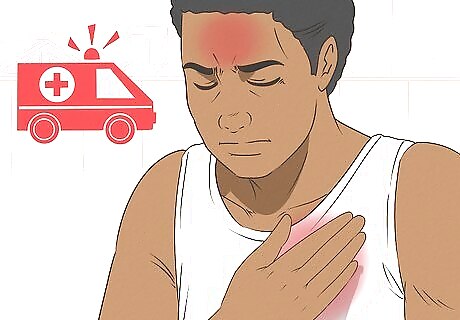
Go to the hospital for sudden changes or additional symptoms. Seek emergency help if your pulse feels much faster or slower than usual and doesn't return to normal within a minute or two. Additional symptoms like chest pain, passing out, or lightheadedness are also signs that you need urgent help. Low heart rate (bradycardia) can cause fainting, fatigue, shortness of breath, or dizziness. High heart rate (tachycardia) can cause shortness of breath, lightheadedness, heart palpitations, chest pain, or fainting.














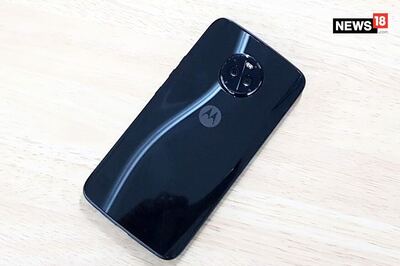


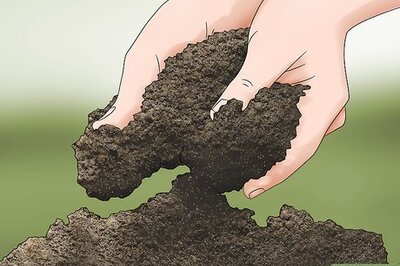
Comments
0 comment